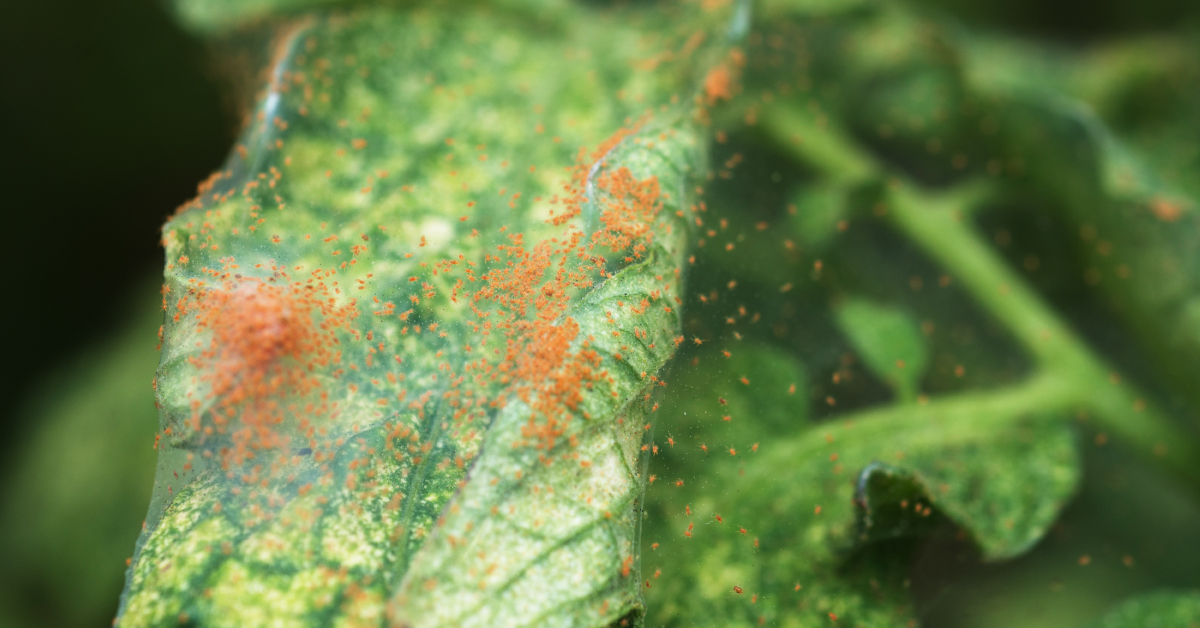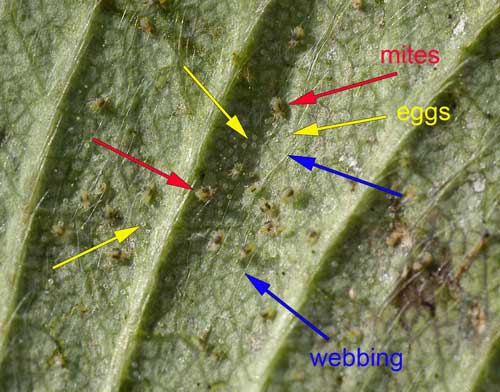The Tiny Terror in Your Garden: How to Detect, Prevent, and Eliminate Spider Mites
By Darrell Smith – DH Garden Centre & DH Landscape Solution, Vancouver, BC
Every gardener has that one moment. You step out into your yard with a cup of morning coffee, ready to admire your bean vines, roses, or cucumbers… only to notice something’s off. The leaves look speckled, dull, almost bronzed. You lean in and see it: the fine, almost silky webbing along the stems and undersides of the leaves.
That, my friends, is your not-so-friendly neighbour: the spider mite.
Here at DH Garden Centre in Vancouver, we’ve helped hundreds of gardeners—both beginners and pros—battle this nearly invisible pest. And today, I want to help you do the same. Whether you’re growing tomatoes on a balcony in Kitsilano or managing a greenhouse in Burnaby, this guide is for you.
Let’s get into how to spot, prevent, and control spider mites before they turn your lush garden into a battlefield.
What Are Spider Mites?
Spider mites are among the most destructive pests you can encounter in your garden or indoor plant collection. These microscopic arachnids—distant relatives of spiders—feed by piercing plant cells and sucking out the juices inside. This feeding method not only weakens the plant, but also leaves it vulnerable to secondary infections and permanent damage.
At just 1/50 of an inch in size, a single spider mite is virtually invisible to the naked eye. But don’t be fooled by their small size—what they lack in appearance, they make up for in speed and numbers. When temperatures are hot and dry, especially in greenhouses or sunrooms, their populations can explode within days.
Spider mites are among the most destructive pests you can encounter in your garden or indoor plant collection
Here at DH Garden Centre in Vancouver, we’ve seen firsthand how quickly spider mites can decimate a garden. One week your cucumber vines are lush and green, and the next, you’re seeing bronzed leaves, webbing on stems, and drooping foliage. We’ve had customers bring in plants affected by spider mites on beans, cucumbers, melons, roses, houseplants, and even fruit trees. And the sad truth? By the time most gardeners notice the damage, the infestation is already well underway.
Spider mites aren’t picky. They attack:
-
Indoor houseplants like palms, figs, and dracaenas
-
Outdoor vegetables like beans, cucumbers, and tomatoes
-
Fruit trees and berry bushes including apples, pears, and raspberries
-
Ornamentals and flowering plants like roses and hydrangeas
-
Hydroponic crops in urban indoor grow systems
What makes them especially hard to manage in Vancouver gardens is the microclimate we deal with—warmer summers and low indoor humidity make the perfect breeding ground for these pests.
If you’re noticing fine webbing or a dusty, stippled look on your leaves, there’s a high chance you’re dealing with spider mites—and it’s time to act fast.
Signs You Have a Spider Mite Problem
Spider mites are sneaky. You probably won’t see them crawling across your leaves like aphids or caterpillars. Instead, they leave behind subtle clues—and by the time you notice, your plant might already be under serious stress.
At DH Garden Centre in Vancouver, we teach gardeners to recognize these early signs before things get out of control:
1. Fine Webbing Between Leaves and Stems
One of the first giveaways of a spider mite infestation is the presence of silky, fine webbing. It usually appears along leaf stems, the underside of leaves, or in the crevices where branches meet. This webbing protects the mites and their eggs from predators and the environment. If you see any of this—don’t ignore it.
2. Stippling or Speckling on the Leaves
As spider mites feed, they pierce the surface of your plant’s leaves and suck out the cellular fluids. This leaves behind a pattern of tiny white or yellowish dots, often called stippling. From a distance, the foliage may look dusty or faded. Up close, it resembles hundreds of pinpricks—this is one of the clearest early signs.
3. Bronzing, Yellowing, or Discoloration
As feeding intensifies, entire leaves may start turning bronze, dull yellow, or even silvery-gray. That shimmer is actually the result of thousands of tiny feeding wounds. If your once-deep green leaves are starting to look faded and blotchy, it’s time to check for spider mites.
4. Curling Leaves and Drought Symptoms
In later stages, spider mite damage causes leaves to curl, dry out, and fall off. The plant begins to look like it’s suffering from a lack of water—even though the soil is moist. This is because the mites are draining essential nutrients faster than the plant can replace them.
If you’re still unsure, grab a jeweler’s loupe or magnifying glass. The most common species, the two-spotted spider mite, is pale green with—you guessed it—two dark spots on its sides.

You probably won’t see them crawling across your leaves like aphids or caterpillars. Instead, they leave behind subtle clues—and by the time you notice, your plant might already be under serious stress.
Why Are Spider Mites So Hard to Control?
One of the reasons spider mites are such a dreaded pest—especially here in Vancouver’s warm summer gardens and greenhouses—is their shockingly fast reproductive cycle.
Under the right conditions (which, unfortunately, include dry air and warm temperatures—common in sunrooms and indoor spaces), spider mites can go from egg to adult in as little as 5 to 14 days.
Let’s put that into perspective:
-
One female spider mite can lay hundreds of eggs during her short lifespan.
-
Those eggs hatch in just a few days.
-
Within two weeks, her offspring are already reproducing.
So while you’re watering your cucumber vines or admiring your tomato starts, what you don’t see is a rapid population explosion happening beneath the leaves. In just one month, you could be dealing with several overlapping generations, each more damaging than the last.
At DH Garden Centre in Vancouver, we often see customers come in with plants that look “a little off” and by the time we inspect them closely, the infestation has already reached a severe stage. That’s why early detection and quick action are so important.

One of the reasons spider mites are such a dreaded pest—especially here in Vancouver’s warm summer gardens and greenhouses—is their shockingly fast reproductive cycle.
Prevention: Don’t Let Them In!
You know that old saying, “An ounce of prevention is worth a pound of cure”? When it comes to spider mites, it couldn’t be more true.
1. Inspect New Plants Carefully
Even plants from reputable nurseries can carry spider mites. At DH Garden Centre in Vancouver, we regularly check our inventory, but spider mites are tiny and sneaky. When buying new plants:
-
Check for webbing or stippling on the undersides of leaves.
-
Bring a magnifier if you can.
-
Avoid overly dry or stressed plants.

How to Identify & Get Rid of Them Quickly: check for webbing or stippling on the undersides of leaves
2. Quarantine New Arrivals
Always isolate new plants for at least 14 days. Keep them away from your other houseplants or outdoor beds. This gives you time to spot any emerging infestations before they spread.
3. Avoid Hot, Dry Conditions
Spider mites love heat and low humidity. To make your garden less inviting:
-
Use humidifiers indoors.
-
Mist plants regularly.
-
Hose down outdoor plants during dry spells.
-
Increase air circulation in greenhouses.
Spider Mite Control: Natural to Chemical Options
If prevention fails and the mites have moved in, don’t panic. You’ve got options. At DH Garden Centre, we always recommend starting with the least invasive method first.
1. Soapy Water and Rubbing Alcohol Spray
Best for: Light infestations or indoor plants
-
Mix water, a few drops of dish soap, and some isopropyl alcohol in a spray bottle.
-
Spray leaves and stems thoroughly.
-
Wipe them down with a cloth or use a cotton swab for crevices.
💡 Repeat every few days for 2–3 weeks to catch all life stages.
2. Neem Oil or Horticultural Oil
Best for: Moderate infestations
These oils smother mites and their eggs, breaking the reproductive cycle. Apply in the early evening to avoid harming pollinators.
⚠️ Do not spray flowers. Oils can harm bees and other beneficial insects if they contact blooms.
3. Insecticidal Soaps
Safe and effective for many home gardens. Look for products labeled safe for edibles if you’re using them on fruits or vegetables.
4. Biological Controls
Don’t want to spray anything? Let nature help.
Introduce beneficial insects like:
-
Green lacewing larvae – natural predators of spider mites.
-
Predatory mites (Phytoseiulus persimilis) – best used in humid environments like greenhouses.
To support these helpers, plant fennel, dill, cilantro, cosmos, yarrow, echinacea, and other flowering herbs nearby to attract and sustain beneficial insects.
:max_bytes(150000):strip_icc()/controlling-spider-mites-3269371_V2-c6ca0233fa374cd993b321e26a1f4d4b.jpg)
If prevention fails and the mites have moved in, don’t panic. You’ve got options. At DH Garden Centre, we always recommend starting with the least invasive method first.
Plants to Watch (and Plants to Choose)
Most Susceptible to Spider Mites:
-
Beans
-
Cucumbers
-
Roses
-
Palms with fine foliage
-
Melons
-
Tomatoes
Less Susceptible (Great for Beginners):
-
Pothos
-
Rubber plants
-
Snake plants
-
Monsteras (easier to wipe clean)
Choosing plants with larger, easier-to-clean leaves makes it easier to spot early symptoms and act fast.
Final Tips from the Garden Centre in Vancouver
💬 As someone who’s helped homeowners, restaurant owners, and balcony gardeners all over Vancouver reclaim their green space from spider mites, here’s my honest advice:
-
Don’t assume it won’t happen to you.
-
Check your plants weekly—especially during hot, dry weather.
-
Act at the first sign. Spider mites don’t wait.
At DH Garden Centre, we carry everything you need to keep spider mites under control—from neem oil and insecticidal soaps to predatory mites and plant-friendly misters. Stop by the shop or message us online if you’re unsure what’s best for your garden.
Let’s protect your green sanctuary—together.
Shop & Visit Us
🪴 DH Garden Centre LTD.
📍 3742 West 10th Avenue, Vancouver, BC V6R 2G4
📞 604-929-7335
🌐 dhgardencentre.com
📸 Instagram: @dh.garden.centre
🎥 YouTube: The Plant Doctor Official


